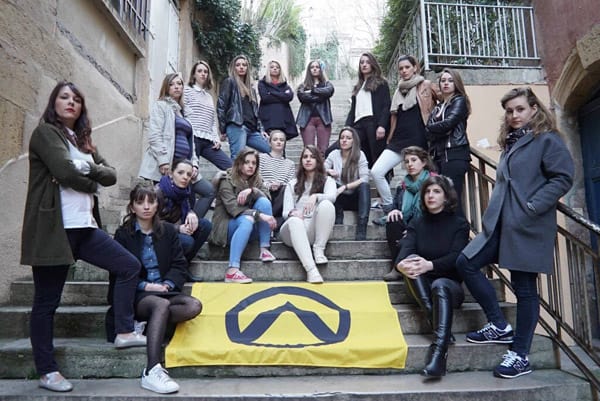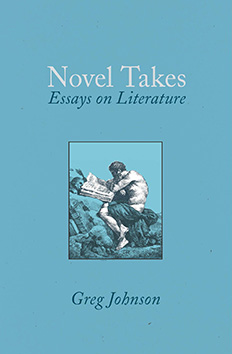What Role for Women in Our Movement?
Victoria Garland, American Renaissance, October 17, 2017
New Republic author Hannah Gais has written an article entitled “The Alt-Right Doesn’t Know What to do With White Women.” In it, Miss Gais, perhaps unknowingly, brings to light an error that many in the Alt-Right make when considering a woman’s “place” in our movement: holding on to the feminist notion that the only praiseworthy role for a woman is to enter the sphere of men, carve out a space for herself, and succeed despite her disadvantage.
It’s understandably hard to move beyond this view. Our movement is made up mostly of young people who grew up in a post-feminist world in which we’re told there are only two models for sex roles: The new, progressive model whereby men and women must be treated as equal and interchangeable, or the model of a Sharia-reminiscent “patriarchy,” in which women have no power, influence, or worth beyond reproductive potential.
The movement has its share of reactionaries. Miss Gais refers to F. Roger Devlin, whose horror at the swift abandonment by Western women of traditional roles has bred an exaggerated suspicion of the idea of giving women any voice at all, for fear that they will always go astray.
Young people cannot be blamed for the sins of previous generations, whose radical politics have deprived them of healthy female role models, nor can reactionaries be faulted for distrusting the female instinct in a civilization now swarming with women who fail to make families or have children. But both groups are guilty of short-sightedness for allowing a few rogue decades to prevent them from looking to the past for a healthy view of female “leadership,” and for failing to promote this as a viable way for women to take part in the movement.
For centuries, many esteemed roles in Western society have been reserved for women. Aside from our most valuable role as the vessels that literally carry our people into the future, women have also been leaders of the household, responsible for creating safe, stable environments for nurturing greatness. We have been providers in our own right, tending gardens, helping in the harvest, and preserving food for the lean season. We have been governesses and teachers; our schoolrooms were places where raw talents were cultivated into staggering accomplishments and discoveries that changed the course of history. We have held the home front when our men were called to defend us from invaders. We have held our communities together during times of crisis. We have made our world more beautiful through the feminine arts, such as song and dance, sewing and needlework, and we have inspired great painters, musicians, and authors to create unrivaled masterpieces. We have nursed our sick and wounded back to health, and looked after our elderly.
I agree with Dr. Devlin that men have been the builders and defenders of civilization, but I would argue that it is women who have been its sustainers. Though many women balk at the idea of “leading from the sidelines,” and scoff at the notion that we were made to be “helpmeets,” the truth is that this foundation of support that we lay is the backbone of our society, and our culture has crumbled without it. The white nationalist movement is floundering because it lacks women who can offer support of the right sort. I blame this, mostly, on our own women’s failure to appreciate unique feminine roles crafted and perfected by generations before us, and their lack of creativity in finding ways to incorporate them into the broader movement. We need to find the synthesis between being a traditional woman in every sense, and using modern means to promote that way of being.

For women, being traditional should not mean disappearing from white advocacy altogether — quite the opposite. Miss Gais mentions some Alt-Right women who rightly pointed out the need to “recruit more women” and to capitalize on the potential of “YouTube channels, blogging, social media, and even presentations at movement conferences” to convey our message. But this can backfire if the women who do so fail to differentiate their content from men’s in a way that promotes the type of femininity we seek to restore.
It’s nice to see the pretty female faces that have surfaced in our movement over the past two years, but if we treat their content as valuable not because it’s particularly novel or compelling, but simply because it comes from the mouth of a woman, then we are no better than the Leftists who push for “gender diversity” quotas. As a movement that claims to appreciate the distinct perspectives that the sexes offer, we must hold our women to a higher standard — one that asks more of them than simply possessing a second X-chromosome. A woman who offers a data-driven presentation on falling European birth rates, a compelling article about race differences and IQ, or a video discussing the problems with Muslim migration is, of course, making a valuable contribution that should not be dismissed, but she may be neglecting the traditional roles that are so maligned today. Until more spokeswomen understand this and begin to distinguish their work from that of men, their effectiveness as white advocates will be limited.
Women can easily look to men’s writings, videos, speeches, and presentations to understand our political situation, but we can look only to each other for productive ways to respond to it. Are we truly advocating large families if we have no healthy role models to guide us through our pregnancies, the uncertain days of early motherhood, and the struggles we’ll encounter as we raise our children? What good does it do for us to write lengthy essays discussing the problems with our education system if we don’t offer examples of how to establish a home-schooling co-op, or of a curriculum that will give our children the education they are denied elsewhere? How can we mourn the loss of Western chivalry to the age of cat-calls and Tinder hook-ups if our leading women are filling their Instagram pages with selfies and vanity shots, and photos of their wine-tastings and nights on the town, rather than pictures of embroidery projects, the pot roast they prepared for their man after a long day at work, or their excursion to a museum, opera, or historical site?
Instead of spending an hour on Twitter waging war with an anonymous Leftist, maybe we should be writing up a recipe to share with our peers. Perhaps we should consider putting more time into the crafts that have traditionally been ours, and using platforms like YouTube to offer tutorials to women who, otherwise, might not have the opportunity to learn them. Maybe we should use Etsy to make our products available to others, and to support fellow craftswomen.
When we do turn our attention to politics, we could approach issues from a specifically feminine perspective, reminding our men that maintaining the integrity of our homes and communities is just as important as securing our borders and winning political victories. We could work to plan more meet-ups and other events, because, as one dissident woman in Miss Gais’ article pointed out, many woman-specific goals require a community, and until we have an ethnostate, or some smaller area of our own, creating community will require a great deal of effort.
White women have survived the last few decades in roles in which we don’t belong. Therefore, we are certainly capable of reclaiming the roles that are rightfully ours, and reclaiming them in a way that will earn the respect even of the men who question our ability to do this after years of degenerate norms that Leftists have pushed onto our sex. The effort to include more ladies in our effort needn’t be a rejection of traditional norms. Instead, it should be a shift that gives the female side of those traditional norms more air time, more visibility, and more respect.
So, the simple answer to the question of what to do with the growing number of women who wish to be more active in the white nationalist movement is to support their increased involvement — but only in the right ways. Women need not “co-opt” the areas where men are thriving in order to become relevant members of our community; we need to focus, instead, on strengthening our own sphere, on using available platforms in our own ways, and on showing other women the beautiful alternatives we offer to the lonely, impoverished, hedonistic existence that is now on offer.
While I, too, am occasionally prone to despair over the state of Western women, I still maintain a faith that inside each of us — even the most degraded of us — there remains a deep longing to be part of something larger than ourselves, that allows us to be ourselves, to live according to our nature, and to make the world more beautiful for it.
There is no question that we need boundaries. There is no question that we need our men to be strong. The authority our men have over us provides us with the security that we need to flourish in our rightful place — and with their guidance, we can flourish as influential members of our movement and community, without the risk that vanity or selfish ambition will warp our dedication to our cause. To silence female voices entirely, bringing a sort of purdah to the West that prevents the rest of the world from seeing how much more women will thrive, succeed, and accomplish in their traditional roles, is to relinquish a huge, vital segment of our society (and our genetic material) to progressivism.
What our movement must do instead is demand more of its women, to push those who are already involved to move beyond progressivism, to find their voices and use them to break the lockstep, to reach farther back into our rich history and bring to the fore proper values, traditions, and social norms so that we may inspire other women to take up the torch they were meant to carry.















